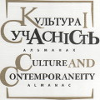Theatricality as an element of the artistic structure of vocal performance
DOI:
https://doi.org/10.32461/2226-0285.1.2018.148233Keywords:
Vocal performance, vocal variety act, theatricality, the artistic structure of pop performances, expressive resources of the vocal genreAbstract
The purpose of the article. The primary purpose of this study is the intention of disclosing theatricality as one of the main elements of the artistic structure of the vocal variety. The mentioned fact determines the relevance of the integrated approach in the theoretical works devoted to this problematic. The methodology is multilevel. It includes both the philosophical level of music studies, formal logical methods, and specific approaches at the crossroads of cultural studies, aesthetics, musicology, pedagogy and theatrical art. Especially unique are complex and system processes. The scientific novelty of this work is justified through the output of this study on the need for synthesis in the various performance of not only vocal skill but also the plastic aspect, which is embodied in the form of the theatrical variety. A particular issue, therefore, is the answer to the challenge of new requirements for variety performance, due, among other things, to the development of media. Conclusions. On the integrity of the variety, the act should be said when the essential principle is observed for all genres of variety art – the created work of various art should be based on such expressive means that belong exclusively to a particular variety genre. The theatricality of variety performance follows from the specific structure of the act: it has a short string (the beginning), which should immediately impress the audience and a quick transition to the next parts of the performance. Locality and mobility are the features that best and most accurately characterize variety expressiveness.
References
Богданов И. А. Художественная структура эстрадного номера и основные методологические принципы его создания // автореферат диссертации на соискание ученой степени доктора искусствоведения. СПб., 2005.
Варшавский Я. Настоящая эстрада / Я. Варшавский // Эстрада без парада. – М.: Искусство, 1991. – С. 229–235.
Вербов А. М. Техника постановки голоса. – Л.: Тритон, 1931. – 50 с.
Коваль Л. М. Преимущества комплексной методики в преподавании эстрадного вокала / Л. М. Ко-валь // Преподаватель XXI века. – Часть 1.– 2011. – №4. – С. 111–115.
Конников А. П. Мир эстрады / А. П. Конников. – М. : Искусство, 1980. – 270 с.
Морозов В. П. О физиологических основах применения вспомогательных научно-технических средств обучения в вокальной педагогике // Вопросы вокальной педагогики. – Вып. 5. – М., 1976. – С. 156–174.
Сухаревич В. Обрамление и содержание / В. Сухаревич // Эстрада без парада. – М.: Искусство, 1991. – С. 192–193.
Tomeček S. The (pop)rock singer: a self-taught or skilled artist / S. Tomeček // Keep it simple make it fast!: an approach to underground music scenes 2 [elektronický zdroj]. – Porto: University of Porto, 2016. – S. 181–186.
Bogdanov I. A. (2005). The artistic structure of the variety act and the main methodological principles of its creation. St. Petersburg [in Russian].
Konnikov A. P. (1980). World of Variety Art. Moscow: Iskusstvo [in Russian].
Koval L. M. (2011). Advantages of a comprehensive methodology in the teaching of pop vocal. Prepo-davatel’ XXI veka, 1, 4, 111–115 [in Russian].
Morozov V. P. (1976). On the physiological bases of the use of auxiliary scientific and technical teaching aids in vocal pedagogy. Moscow: Voprosy vokal’noy pedagogiki, 5, 156–174 [in Russian].
Sukharevich V. (1991). Framing and Content. Estrada bez parada. Moscow: Iskusstvo, 199, 192–193 [in Russian].
Tomeček S. (2016). The (pop)rock singer: a self-taught or skilled artist. Keep it simple make it fast!: an ap-proach to underground music scenes 2 [elektronický zdroj]. Porto: University of Porto.
Varshavskii Ya. (1991). Real Variety. Moscow: Iskusstvo [in Russian].
Verbov A. M. (1931). The inhale technique. Lviv: Triton [in Russian].
Downloads
Issue
Section
License

This work is licensed under a Creative Commons Attribution 4.0 International License.
Authors who publish with this journal agree to the following terms:
- Authors retain copyright and grant the journal right of first publication with the work simultaneously licensed under a Creative Commons Attribution License that allows others to share the work with an acknowledgement of the work's authorship and initial publication in this journal.
- Authors are able to enter into separate, additional contractual arrangements for the non-exclusive distribution of the journal's published version of the work (e.g., post it to an institutional repository or publish it in a book), with an acknowledgement of its initial publication in this journal.
- Authors are permitted and encouraged to post their work online (e.g., in institutional repositories or on their website) prior to and during the submission process, as it can lead to productive exchanges, as well as earlier and greater citation of published work (See The Effect of Open Access).

